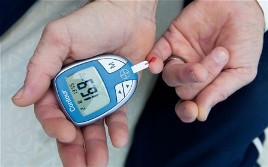My recent CPD activities have included completing the West Lothian Leadership course and have now started an MSc course in Educational Leadership at Stirling University. I have also undertaken marking for the SQA of both Standard Grade and Advanced Higher scripts. I have been leading the Rights Respecting Schools initiative within my school and have recently been appointed the Business Links development post holder within the school. Over the past year, I have also been trying to implement more use of technology in my teaching, by using facilities such as the PS3 and XBOX to enhance the learning of pupils. In addition I have recently been looking to use Edmodo with my classes such that more online resources have been available to them. I have also lead a recent foreign trip to CERN in Geneva, and undertaken the arrangement of the end of term shows within the school. Continue reading Stirling, CERN, SQA and RRSA CPD Activities
Category Archives: Responsibility of All
Knowing your ABCs is just as important in H&T
Raising Literacy within Health and Technology
 Anne Keenan – Health and Wellbeing
Anne Keenan – Health and Wellbeing
As part of the department improvement plan to focus on the raising attainment we decided to focus on the opportunities to develop literacy skills in S1. Pupils in S1 currently complete a Hygiene & Food Safety project. Mary Gibson observed a series of lesson and identified several methods that teachers can use to improve the quality of learner feedback.
Prior to this our feed back focused mainly on the subject contents and the presentation of their work. Following Mary’s input we have been able to identify and implement several changes that will help pupils to set targets for improvements relevant to their own literacy needs.
Steps identified include:
- Produce a standardised format illustrating how to compile a report
- Encourage pupils to make use of H&T key words displayed throughout department to expand pupils’ vocabulary and comprehension
- Set standardised comments to be used for pupil feedback by departmental staff
- Lunchtime opportunities for pupils to discuss with staff their learning needs for completion of project
The opportunity to work closely with Mary has enabled the department to self-reflect on current practice, update approaches to ensure all pupils are receiving effective feedback and importantly having clear targets set.
R.E. Inset Day
 Frank Quinn – Principal Teacher R.E. Department
Frank Quinn – Principal Teacher R.E. Department
As part of the school’s plan in implementing “Shining the Light” and “This is Our Faith” (T.I.O.F.), it was decided that some time should be spent looking at part of the document “T.I.O.F.” by the whole staff during an Inset day. The school believes the way forward with “T.I.O.F.” and the school’s Religious Education programme is to approach it as a whole-school responsibility, like Literacy, Numeracy and H&WB. Each department should be aware where there are opportunities for them to contribute to the R.E. in the school.
Diabetes Workshop
This was a very informative CPD experience. We have many pupils in the school who have diabetes and we must be aware of their needs. The CPD went through the two differnt types of diabetes and how these can be controlled. Examples of the different pieces of equipment were there for staff to look at and try! The main message I took form the session was that it is important for staff, parents and medical staff to work together to ensure the wellbeing of the pupil. NHS staff were keen to point out that staff and parents must contact them if they need support. There are a huge number of pupils in the lothian who have diabetes and few nurses, so if support is required we must ask.
If pupils are going away on a school trip I recommend that a meeting set up with parents, and if required NHS staff to ensure that the correct plan and resources are in place for the duration of a trip. For example, medication may need to be changed for a sports activity trip. Continue reading Diabetes Workshop
Primary and Secondary PE Provision
November witnessed the first meeting of the PE working group at St Margaret’s Academy. The group is made up of primary and secondary PE specialists, school staff members and senior management and has been tasked with reflecting on the second and third level PE provision across the St Margaret’s cluster. The inaugural meeting was attended by 19 members of primary and secondary staff who discussed the PE provision currently on offer to P6 and P7 pupils across the associated primaries and S1 and S2 pupils within St Margaret’s.
Managing severe allergies in schools
Nighean Hannah from the NHS recently delivered a CPD event on managing severe allergies in schools. Her PowerPoint which can be viewed here provided lots of useful information on:
- What anaphylaxis is
- Symptoms
- Types of reactions
- Causes and treatments
- Devices
- Management in schools
- What to do in an emergency
I found this a very useful learning experience and would recommend all staff to have a look at this.
The following websites provide more information Allergies and Intolerances and Anaphylaxis Campaign
S3 Profiling and the Profile – Progress Update
During the INSET day that took place on the 18th of September the Profile team and representatives from most curricular areas engaged in discussions where the next steps towards the creation of the S3 profile were agreed. The next steps included:
- Plans for completion of S3 profile using an amended version of the NAR pilot with a deadline of early December in time for the S3 Consultation meeting
- More information would be shared with parents through the newsletter
- S3 focus week on skills to gather information for pupils to understand their learning in terms of skill development Continue reading S3 Profiling and the Profile – Progress Update
Assessment and Moderation – Key Messages
IS Day presentation by Catherine Kerr (PTC Science)
To be honest I’m not really an expert on the subject. As a starting point I walked about the school asking staff what their understanding of Assessment and Moderation was. The responses were really interesting as the teachers that I put on the spot (mainly un-promoted staff) all had very similar understandings, concerns, and misconceptions. My Assessment and Moderation presentation therefore focussed on the teachers at St. Margaret’s point of view and my hope was that it would build on what was already known as well as clarify some of the key messages from educational policy and best practice.
The information provided came from several sources including the Education Scotland website which provides lots of current information on Assessment and Moderation. In addition I accessed the National Assessment Resource (NAR). As a database I think the NAR is a bit of a let down but the search facility is useful. I searched for ‘sharing the standards’, which brought up different authorities examples of moderation some of which were excellent and used throughout my presentation. All of the information I thought staff might find useful has been placed in a ring binder for each curricular area.
Further useful links include:
Using CAT data effectively – Presentation
John Slavin Faculty Leader Raising Attainment
This was a brief introduction to how the CAT data that the school has for each pupil could be used to aid teaching and learning.
Initially, I explained that there are three batteries of tests: Verbal examples, Non-Verbal examples and Quantitative examples and briefly described examples of each. Pupil profiles are generated from this data and strengths / development needs can be identified.
Data for whole classes can be graphically represented in a Scatter graph to give a powerful visual interpretation of the results. The results can be analyzed with the help of the scatter diagram.
I have produced such scattergraphs for each class in S3/4 and will do likewise for S2 in time. If anyone is interested in looking at CAT data and how it can be used to highlight achievement / underachievement, Dr. Ben Doody and myself (John Slavin) are running a workshop on 07 September 2012. This will provide teachers with an opportunity to gain further experience of using this data and can hopefully aid the identification of the pupils’ needs.
S3 Profiling and the Profile – Presentation
Frances Laing (Senior Head of House)
The S3 Profiling and the Profile Presentation aimed to engage staff in the profiling process. It aspired to share the key messages contained in building the curriculum 5 a framework for assessment about the profile and the process involved in producing it. There is a requirement for pupils at key transition times to create a profile and our present S3 cohort will be our first year group to experience Broad General Education and move into the Senior Phase of the new curriculum.
We in our classes should be aware that for our young people to create this profile they have to experience opportunities in their day to day learning that allows them to reflect and realise their achievements. This is part of learning and teaching and should be ongoing through S1 to S3. Below is an example of what this profile may look like. Further information from Education Scotland can be located here.








